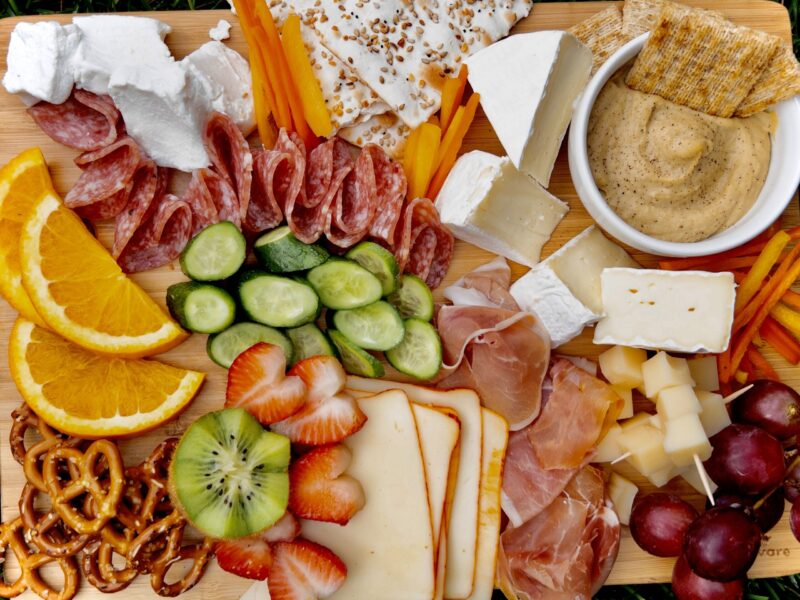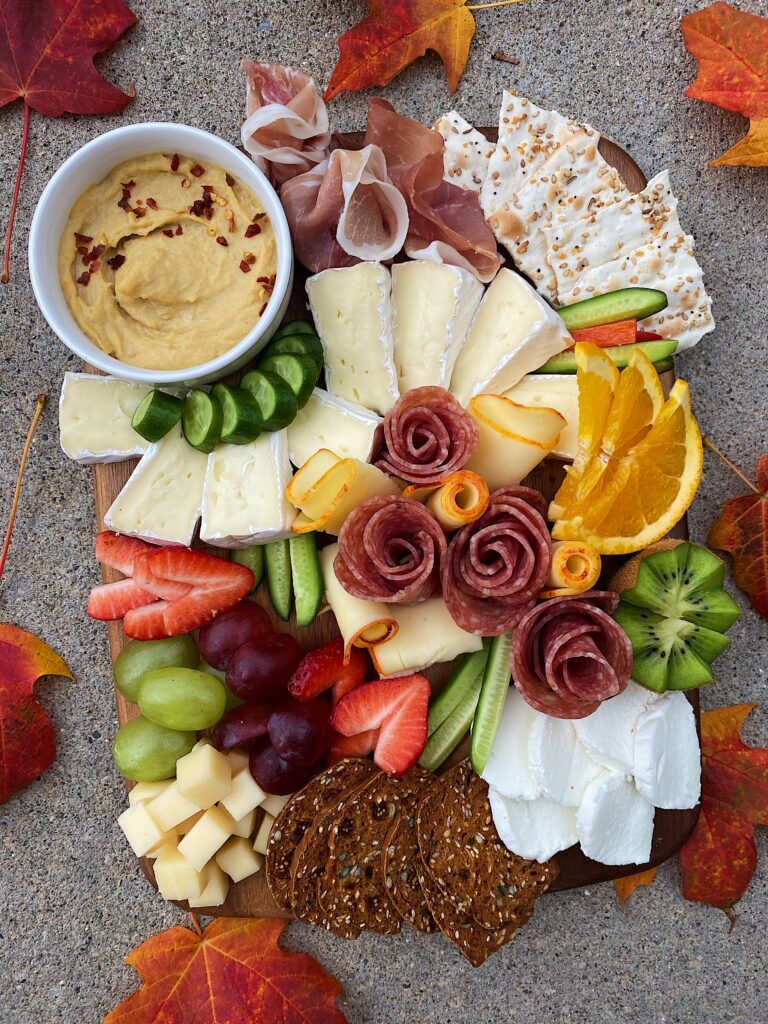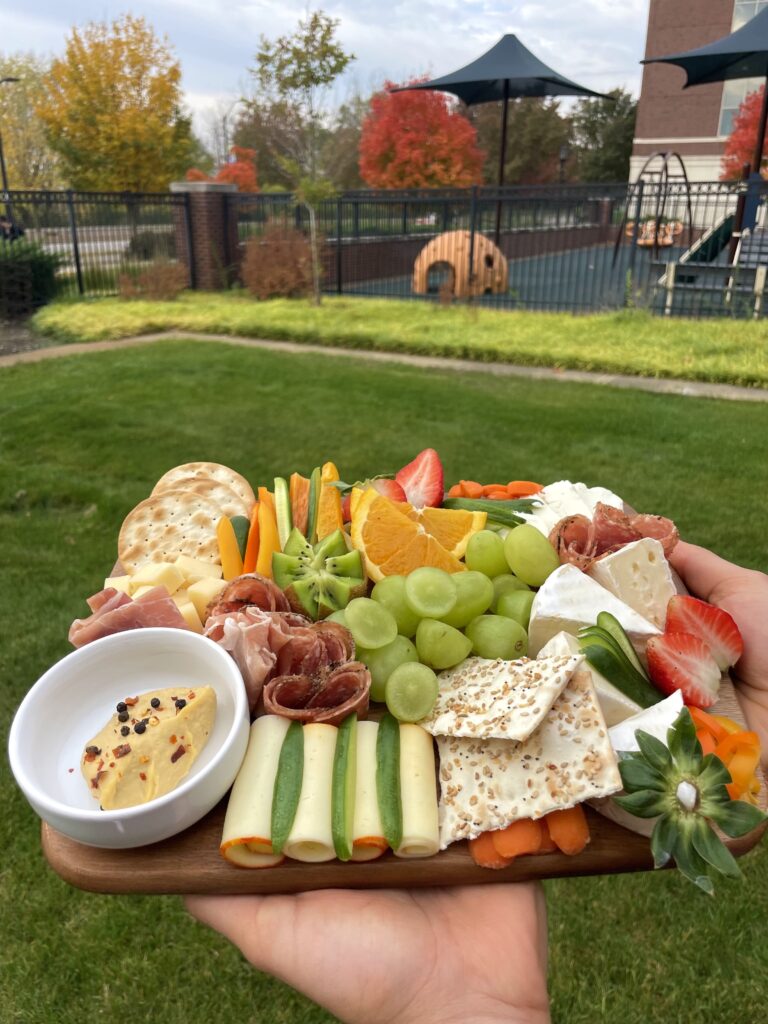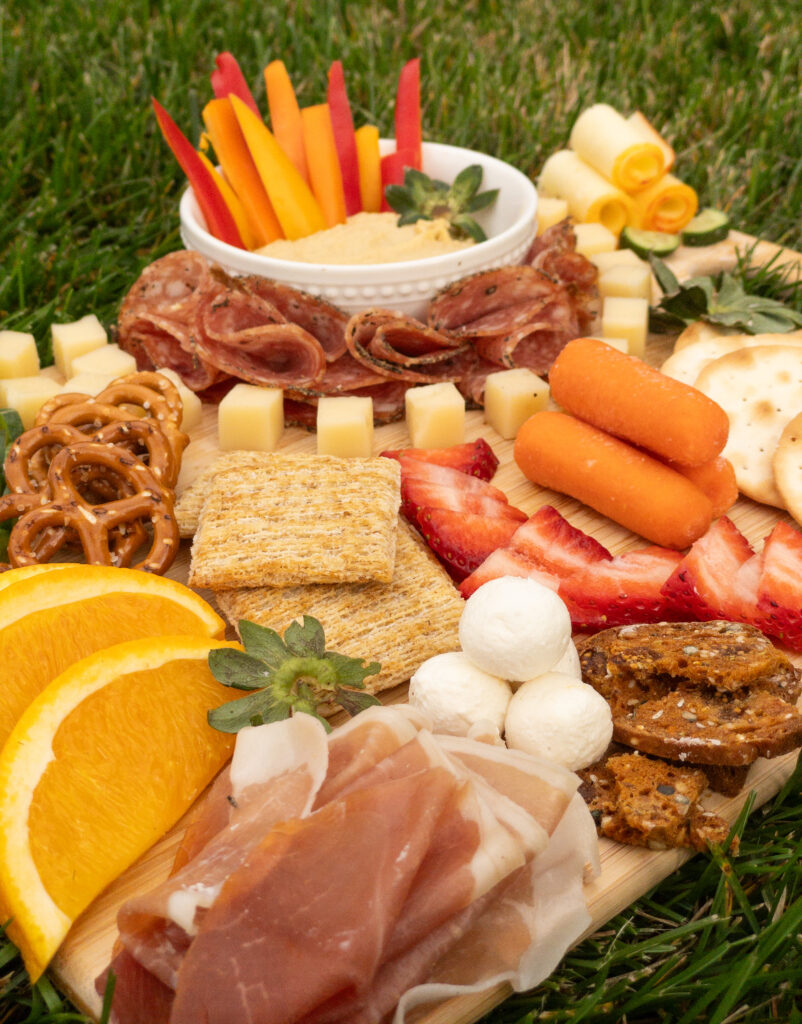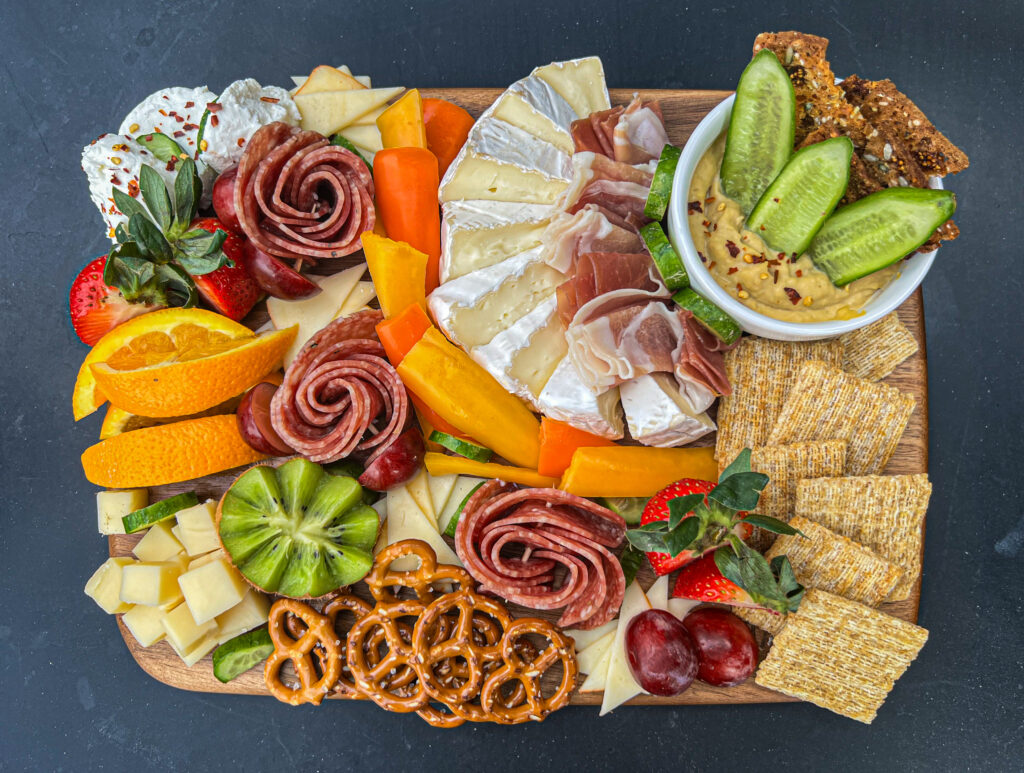Nutrition Science communication techniques course readies healthy food for its close-up
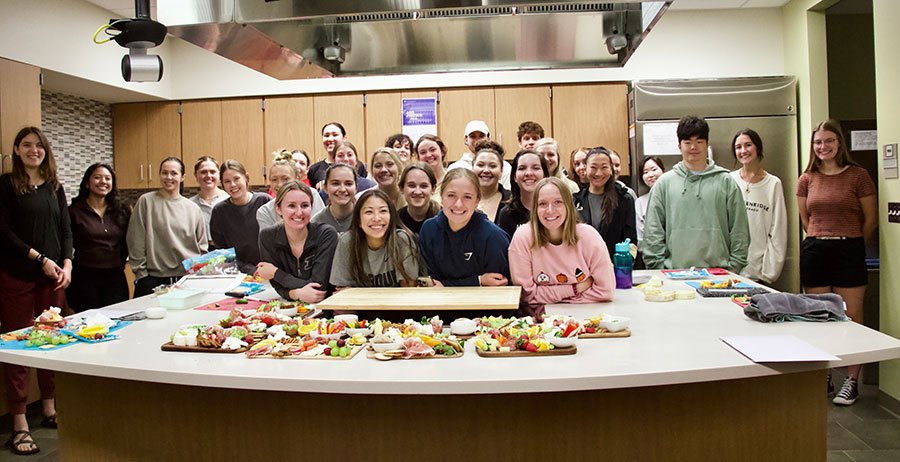
Students in the Communication Techniques in Foods and Nutrition course pose for a group photo after a recent class that focused on food photography.Tim Brouk
Written by: Tim Brouk, tbrouk@purdue.edu
Aunt Jean’s family-favorite cranberry and almond cheeseball will get a visual makeover thanks to niece and Purdue University Department of Nutrition Science senior Gabrielle Joley’s new food styling and photography skills learned in NUTR 42400 (Communication Techniques in Foods and Nutrition).
A recent class concentrated on food photography, a common sight on social media platforms. But just whipping out a smartphone and snapping a quick pic before digging in sometimes won’t cut it. There is much to consider: lighting issues, angles and editing the image with high-end software.
While the fall 2023 course is taught by Rachel Clark, Nutrition Science clinical assistant professor, Sarah Kossler, a nutrition science senior, led the food photography chapter because of her side job as a professional food photographer. The student gave tips on how to properly chop vegetables, style the food and get the best angles — over the top is almost always best — to her peers.
Joley can’t wait to take what she learned to her family’s Thanksgiving.
“I think, after this class, I might go, ‘Hey Aunt Jean, maybe I can set up your dish,’” said Joley, who will travel to Fort Wayne, Indiana, to celebrate the holiday. “Maybe I can experiment and get creative.”
Beyond the holidays and individual social media posts, the communication techniques course assists future nutritionists with effectively communicating the benefits of good nutrition to the public via in-person presentations, food demonstrations, media relations and online videos. Clark said the class is invaluable for future nutritionists who will be working with the public.
“Their future jobs are going to be (working with) food,” she added. “Styling the food is a whole new thing for them. We talked about lighting, which some haven’t thought about before.”
Senior Kaitlan Tracy said the photography class will also help her goal of publishing her own digital cookbook.
“I’ll need to put pictures next to the recipes. This will definitely help,” Tracy confirmed.
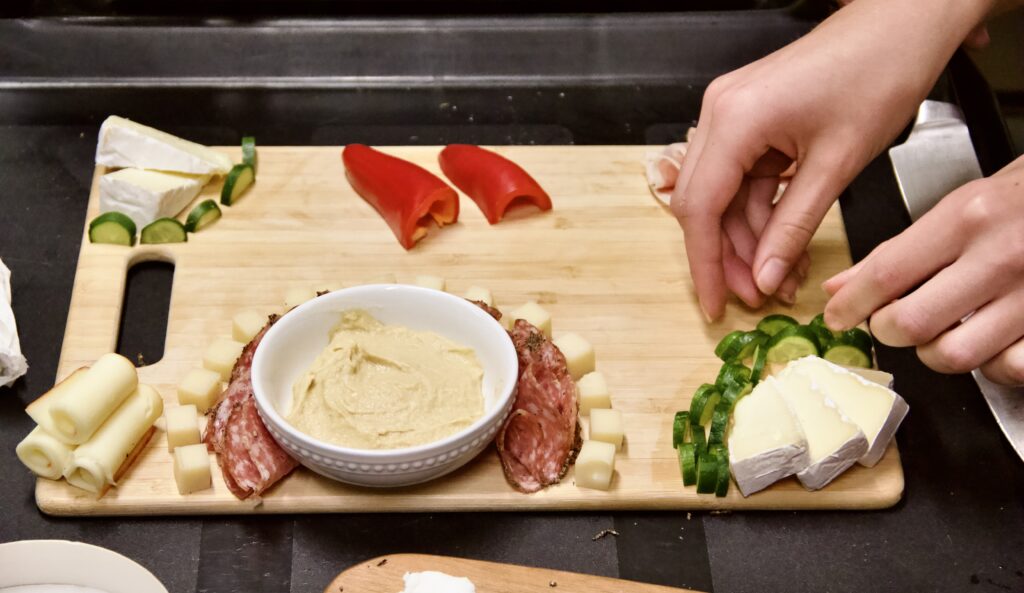
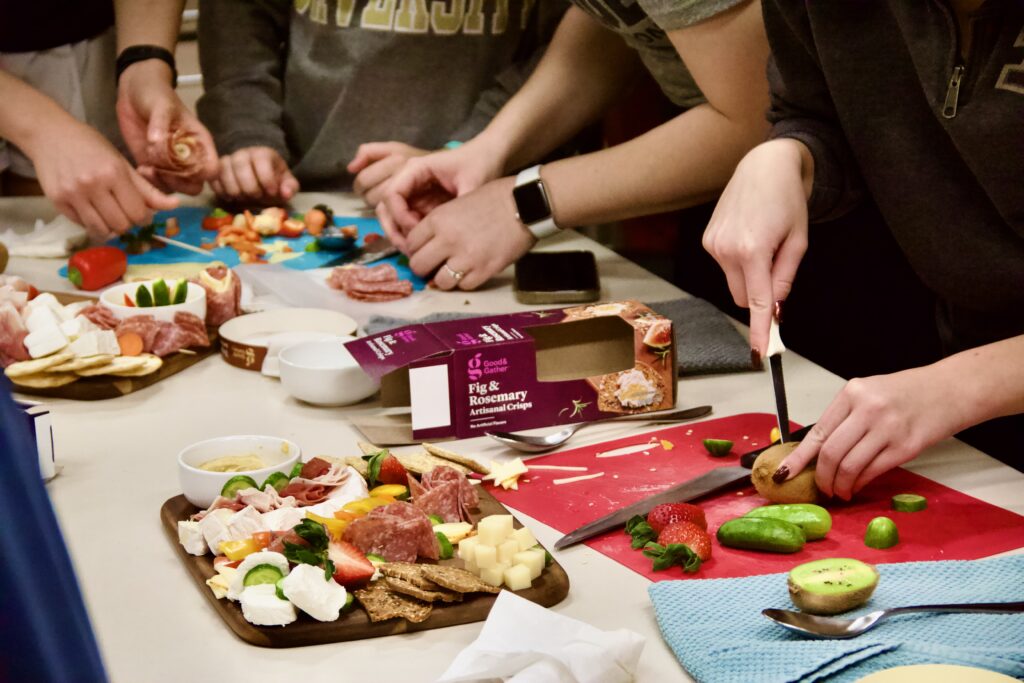
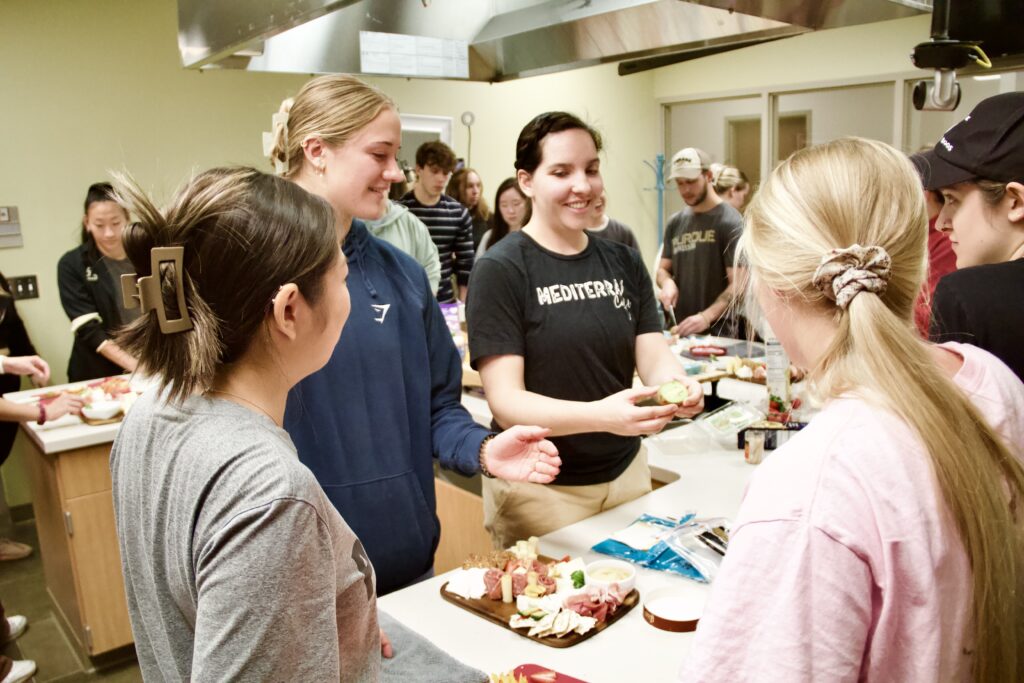
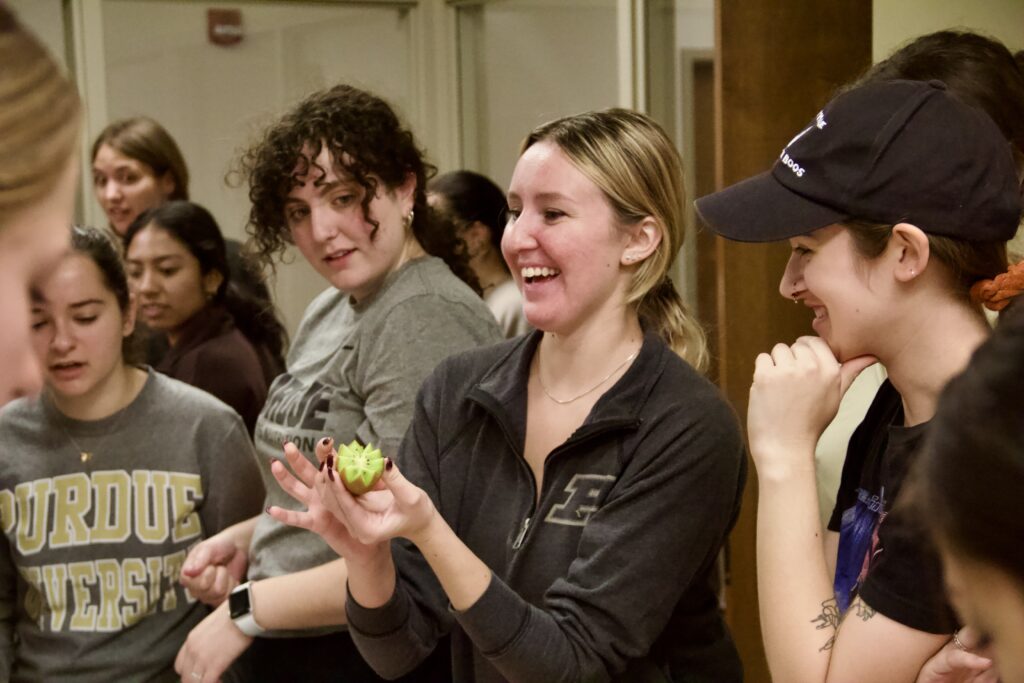
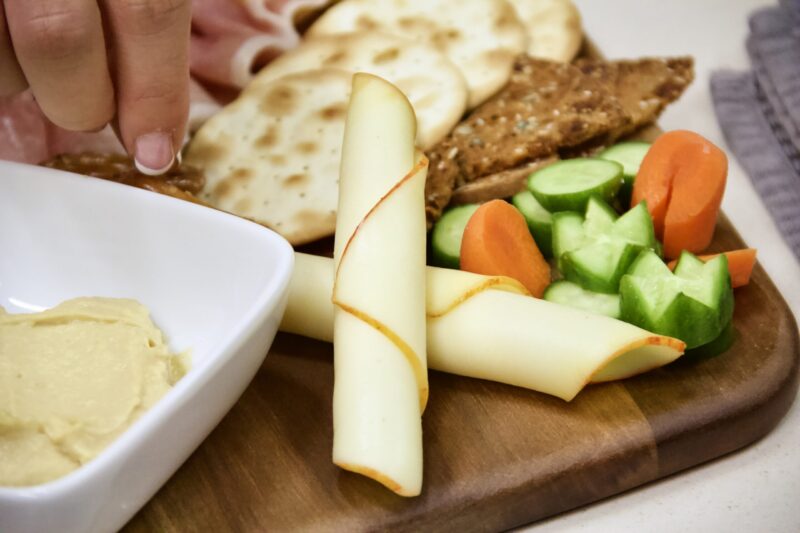
Putting the ‘cute’ in charcuterie
Clark and Kossler chose charcuterie boards as the class’ savory subjects. The 30 students in the class filled the Lyles-Porter Hall Teaching Kitchen. They were broken into teams of three and were given the task of creating their own boards by chopping the fruit and vegetables themselves while making sure to leave room for the meat, cheese and other small morsels that make up a traditional charcuterie board.
Students worked diligently on their culinary creations. They had the finished picture in mind while they arranged the peppers, hummus and smoked meats into a tableau of tastiness. Some of the students, mostly seniors and juniors, had partaken of charcuterie boards at parties and family gatherings but had never made their own.
“There’s really no strategy, but we like symmetry so we’re trying to make it as symmetrical and appealing as possible,” said Lauren Cameron, another Nutrition Science senior. “We changed it probably four times.”
While thanksgiving plates often have a lot of beige foods — turkey, gravy, stuffing, mashed potatoes, rolls — the charcuterie boards popped with color and texture. Some students added backgrounds via towels and other items in the kitchen for contrast and compliment. They experimented and used their knowledge of the color wheel to guide them.
“We had a warmer board, so we used a blue towel for a cool color,” Nutrition Science senior Sarah Haaser explained. “But we thought the blue took the attention away from the food.”
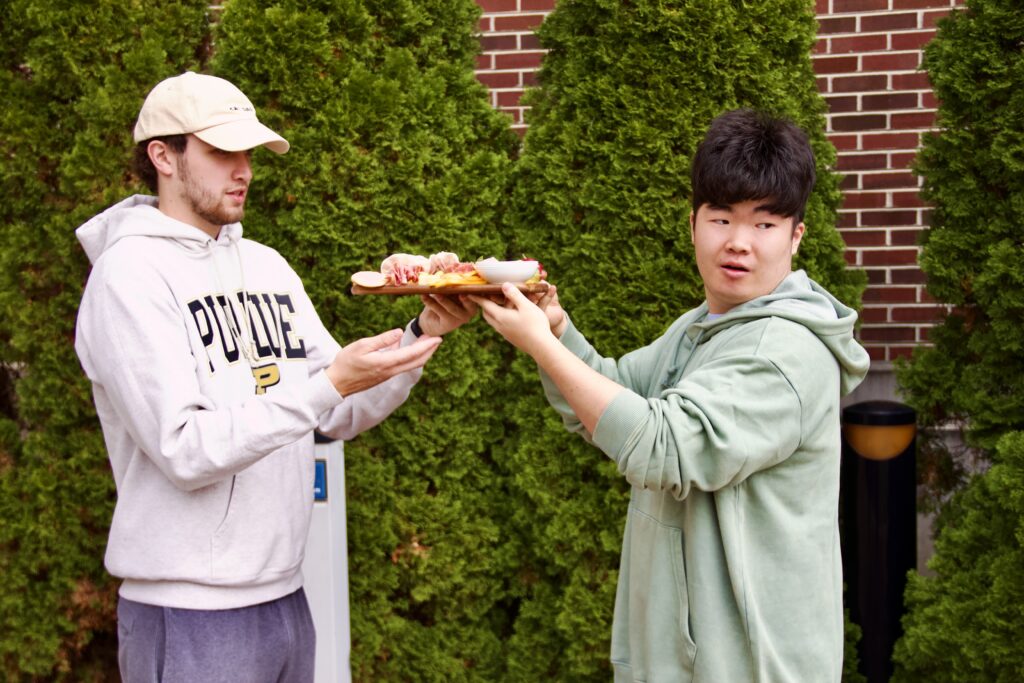
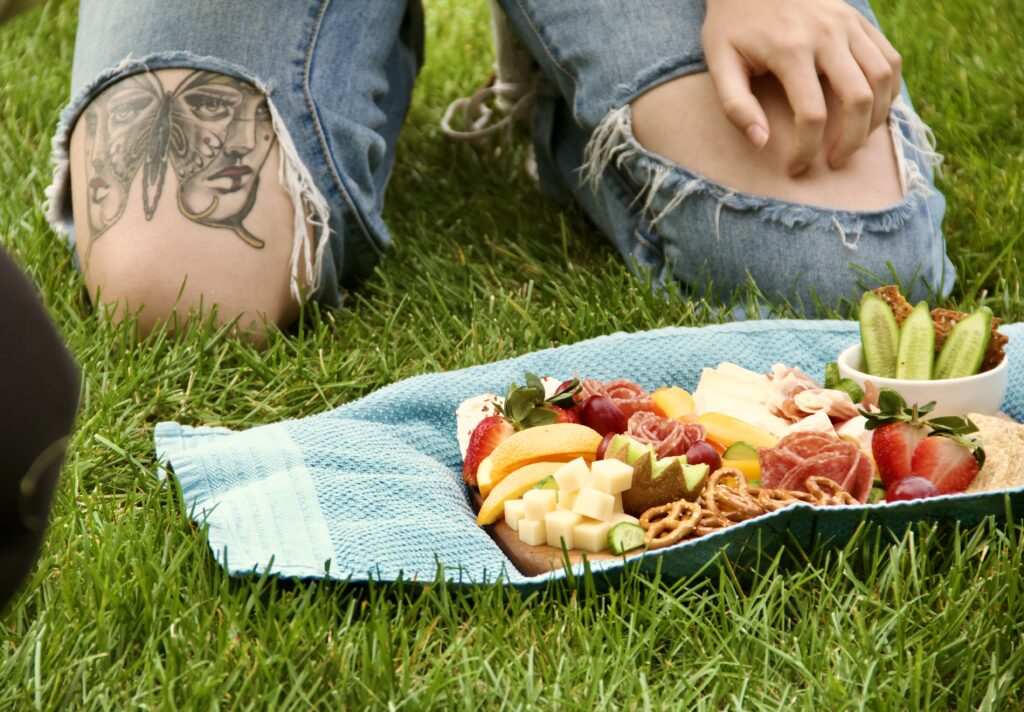
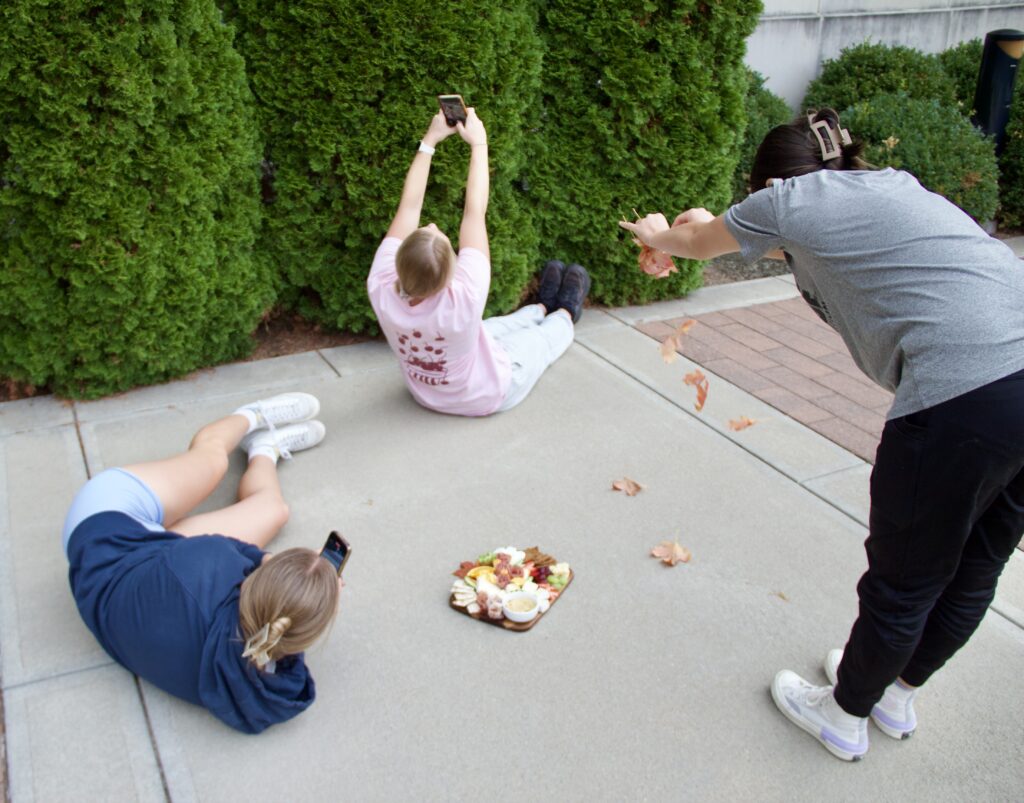
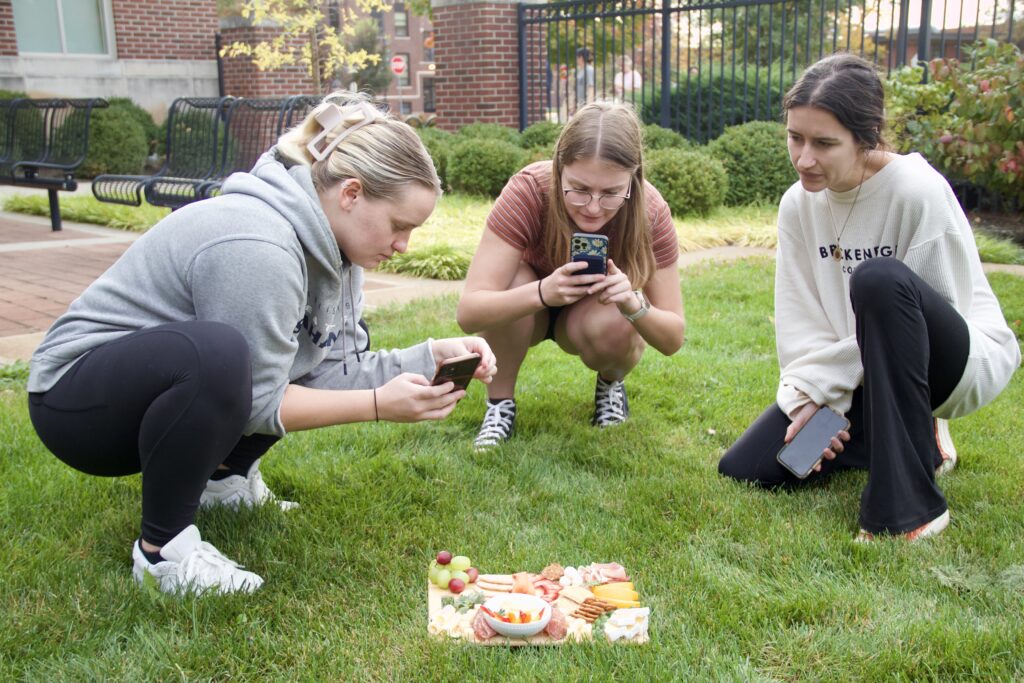
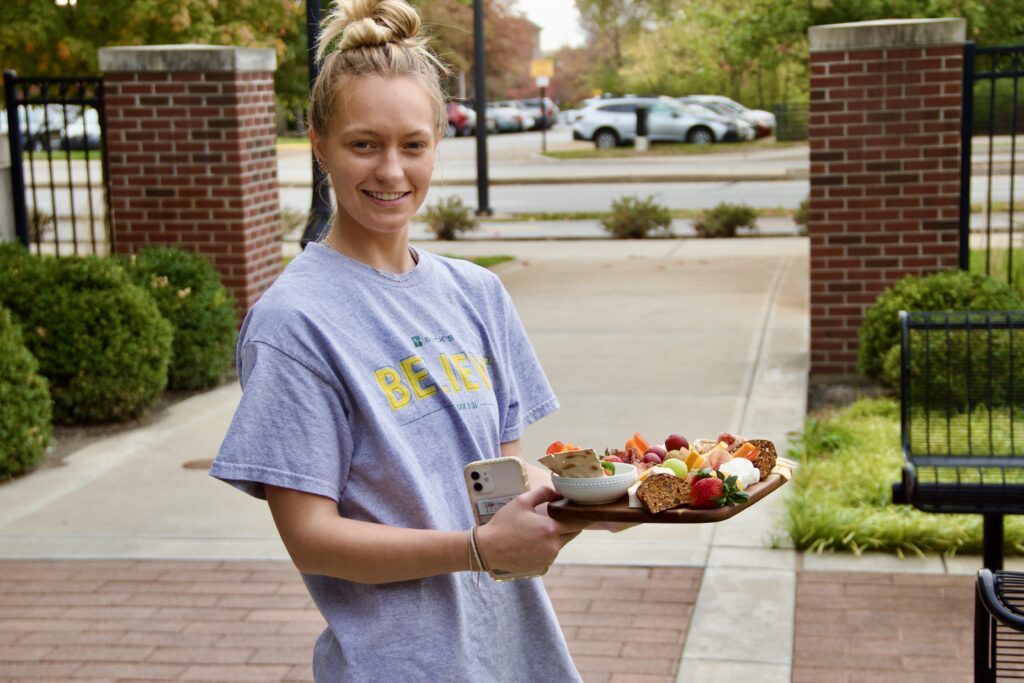
Nature’s light before Lightroom
Once the boards looked beautiful, most student groups took their creations out of the test kitchen to find natural light. Some found windows and stayed inside Lyles-Porter Hall, but others went outside on the late October morning. A bit overcast, it allowed the students to take post-worthy shots. They applied the proper angles and most used a white lighting board to bounce more light to the food. After the shots were captured, there was still one more step — uploading their images to Lightroom, an image processing program developed by Adobe.
The students edited and critiqued their photos to make them brighter and bolder, like what online food bloggers surely do for their own creations.
With the looks of Joley and her team’s final images, Aunt Jean will be very impressed when her niece designs and photographs the family’s favorite cheeseball — and other dishes in the future.
“It’s a real-life application from this class,” Joley said.
